Aaron J. Hill
Spiking Neural Streaming Binary Arithmetic
Mar 23, 2022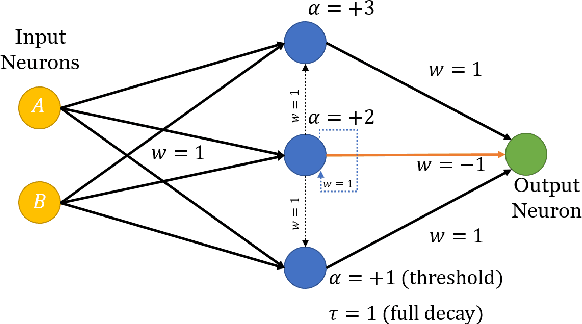
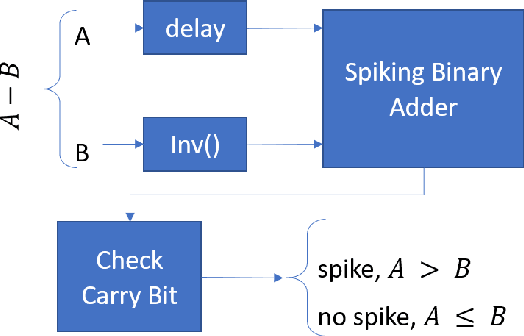


Abstract:Boolean functions and binary arithmetic operations are central to standard computing paradigms. Accordingly, many advances in computing have focused upon how to make these operations more efficient as well as exploring what they can compute. To best leverage the advantages of novel computing paradigms it is important to consider what unique computing approaches they offer. However, for any special-purpose co-processor, Boolean functions and binary arithmetic operations are useful for, among other things, avoiding unnecessary I/O on-and-off the co-processor by pre- and post-processing data on-device. This is especially true for spiking neuromorphic architectures where these basic operations are not fundamental low-level operations. Instead, these functions require specific implementation. Here we discuss the implications of an advantageous streaming binary encoding method as well as a handful of circuits designed to exactly compute elementary Boolean and binary operations.
Neuromorphic scaling advantages for energy-efficient random walk computation
Jul 27, 2021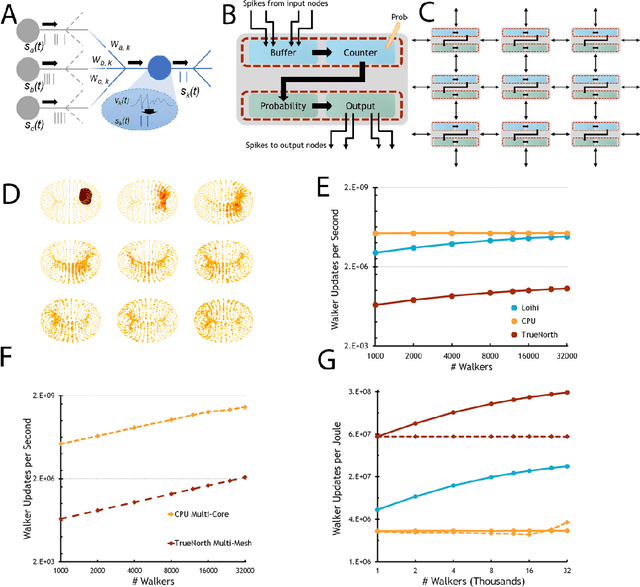


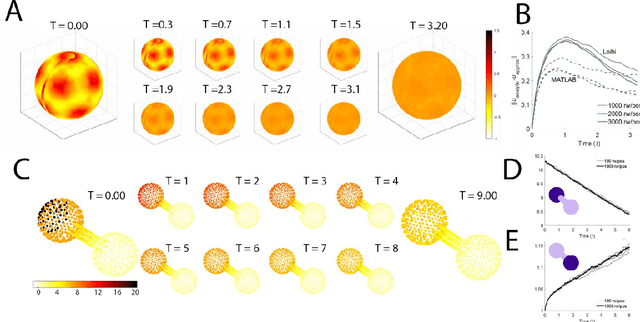
Abstract:Computing stands to be radically improved by neuromorphic computing (NMC) approaches inspired by the brain's incredible efficiency and capabilities. Most NMC research, which aims to replicate the brain's computational structure and architecture in man-made hardware, has focused on artificial intelligence; however, less explored is whether this brain-inspired hardware can provide value beyond cognitive tasks. We demonstrate that high-degree parallelism and configurability of spiking neuromorphic architectures makes them well-suited to implement random walks via discrete time Markov chains. Such random walks are useful in Monte Carlo methods, which represent a fundamental computational tool for solving a wide range of numerical computing tasks. Additionally, we show how the mathematical basis for a probabilistic solution involving a class of stochastic differential equations can leverage those simulations to provide solutions for a range of broadly applicable computational tasks. Despite being in an early development stage, we find that NMC platforms, at a sufficient scale, can drastically reduce the energy demands of high-performance computing (HPC) platforms.
Solving a steady-state PDE using spiking networks and neuromorphic hardware
May 21, 2020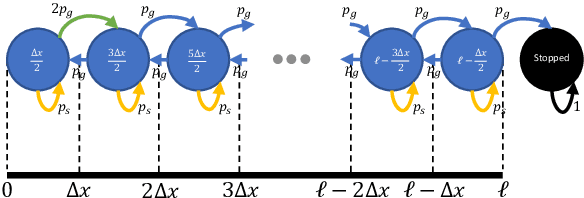
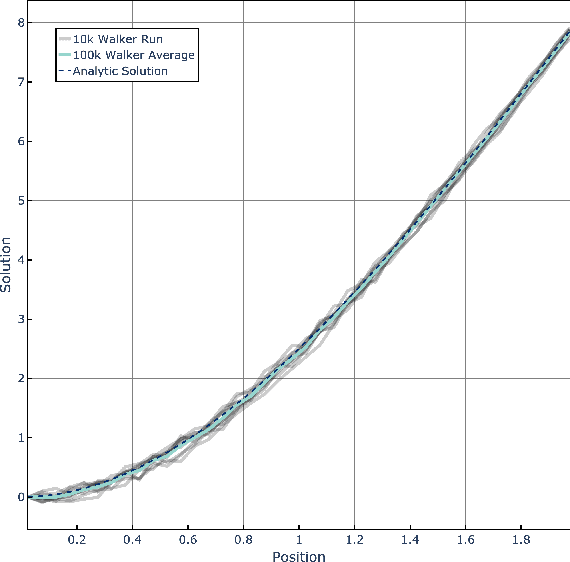
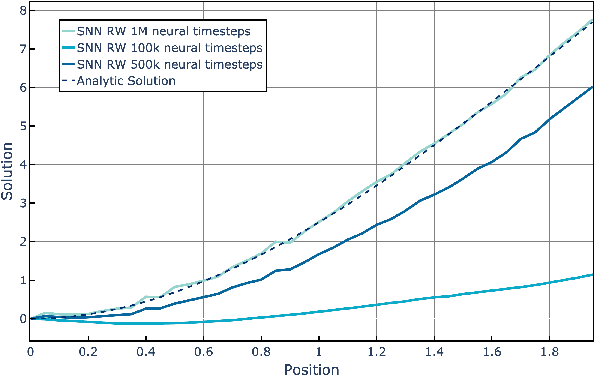
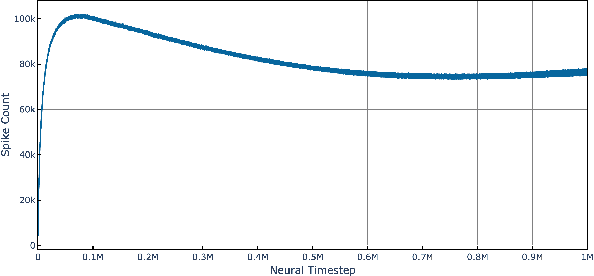
Abstract:The widely parallel, spiking neural networks of neuromorphic processors can enable computationally powerful formulations. While recent interest has focused on primarily machine learning tasks, the space of appropriate applications is wide and continually expanding. Here, we leverage the parallel and event-driven structure to solve a steady state heat equation using a random walk method. The random walk can be executed fully within a spiking neural network using stochastic neuron behavior, and we provide results from both IBM TrueNorth and Intel Loihi implementations. Additionally, we position this algorithm as a potential scalable benchmark for neuromorphic systems.
A Digital Neuromorphic Architecture Efficiently Facilitating Complex Synaptic Response Functions Applied to Liquid State Machines
Mar 21, 2017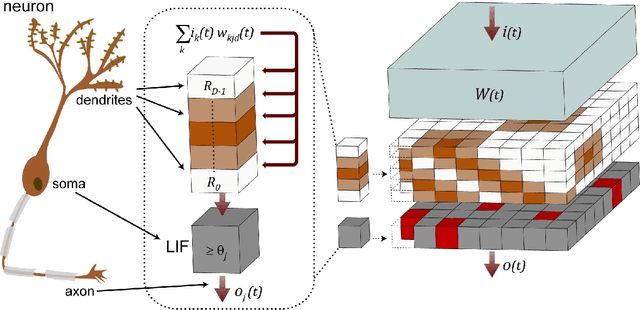
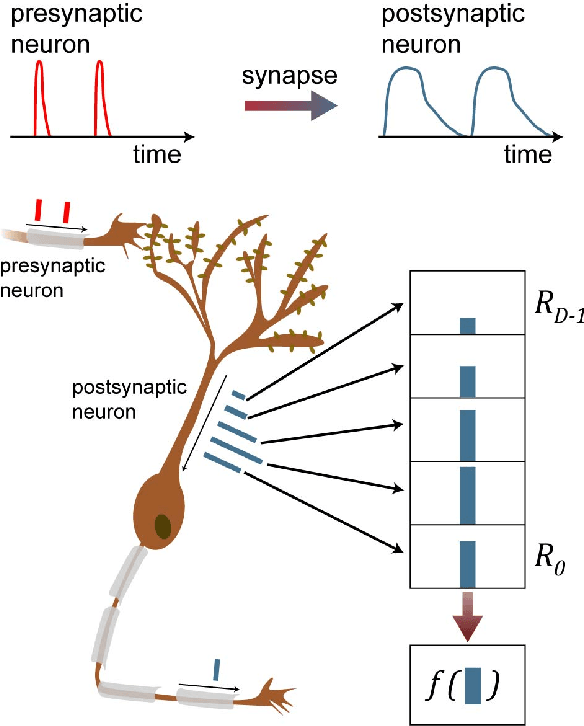
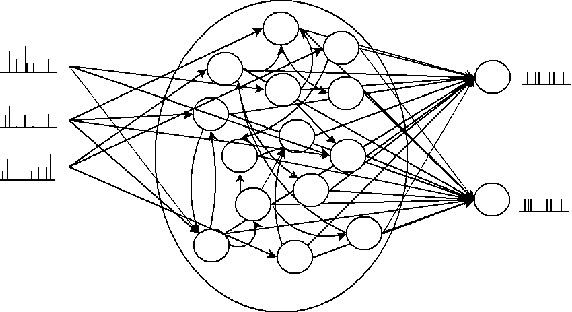

Abstract:Information in neural networks is represented as weighted connections, or synapses, between neurons. This poses a problem as the primary computational bottleneck for neural networks is the vector-matrix multiply when inputs are multiplied by the neural network weights. Conventional processing architectures are not well suited for simulating neural networks, often requiring large amounts of energy and time. Additionally, synapses in biological neural networks are not binary connections, but exhibit a nonlinear response function as neurotransmitters are emitted and diffuse between neurons. Inspired by neuroscience principles, we present a digital neuromorphic architecture, the Spiking Temporal Processing Unit (STPU), capable of modeling arbitrary complex synaptic response functions without requiring additional hardware components. We consider the paradigm of spiking neurons with temporally coded information as opposed to non-spiking rate coded neurons used in most neural networks. In this paradigm we examine liquid state machines applied to speech recognition and show how a liquid state machine with temporal dynamics maps onto the STPU-demonstrating the flexibility and efficiency of the STPU for instantiating neural algorithms.
 Add to Chrome
Add to Chrome Add to Firefox
Add to Firefox Add to Edge
Add to Edge